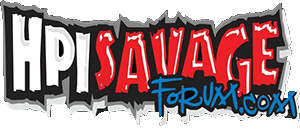toolman207
Member
- Messages
- 49
Hi everyone
I just bought myself a Savage XL 5.9 RTR, I'm still waiting for it to turn up but I've read a few people are sealing their engine with silicone gasket around the carb neck and crank case. Is this worth doing before using the truck?
Like the truck I'm brand new here be kind The truck is brand new and has all the 2014 mods/upgrades?
The truck is brand new and has all the 2014 mods/upgrades?
thanks in advance
I just bought myself a Savage XL 5.9 RTR, I'm still waiting for it to turn up but I've read a few people are sealing their engine with silicone gasket around the carb neck and crank case. Is this worth doing before using the truck?
Like the truck I'm brand new here be kind
thanks in advance
